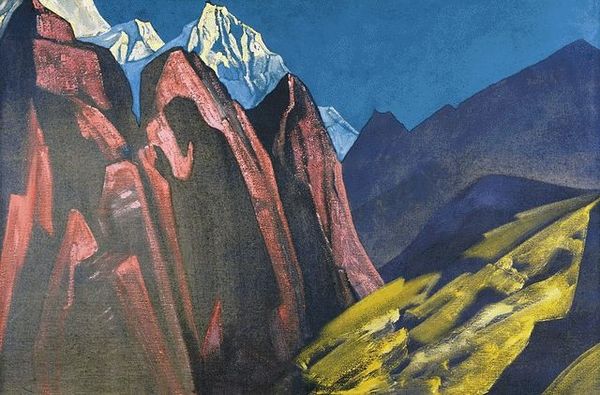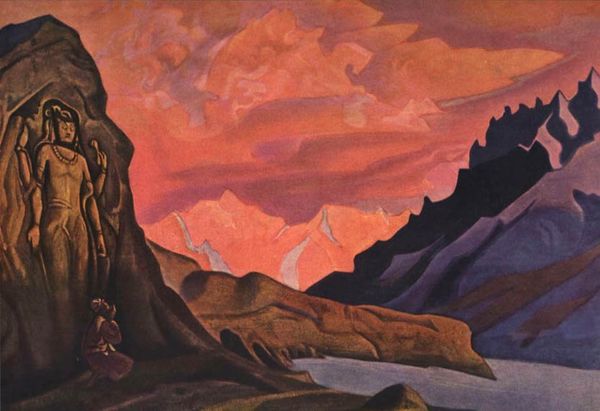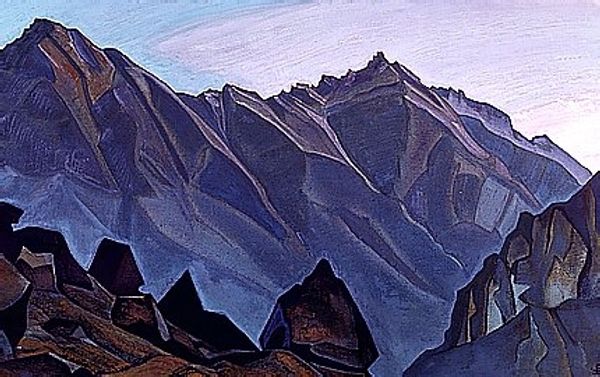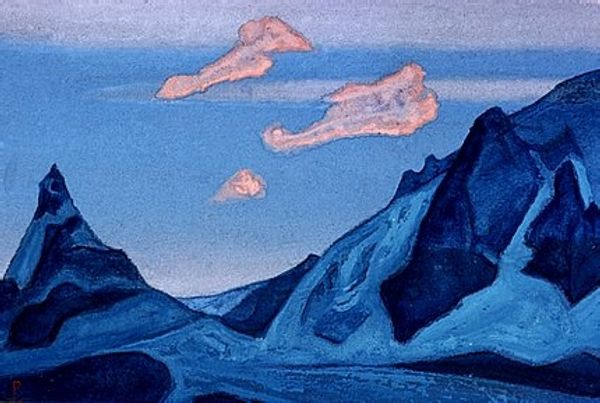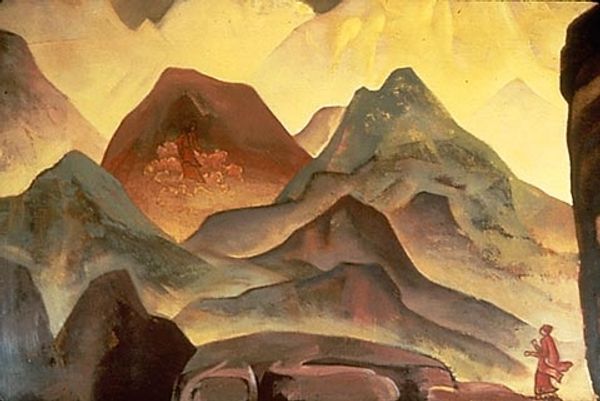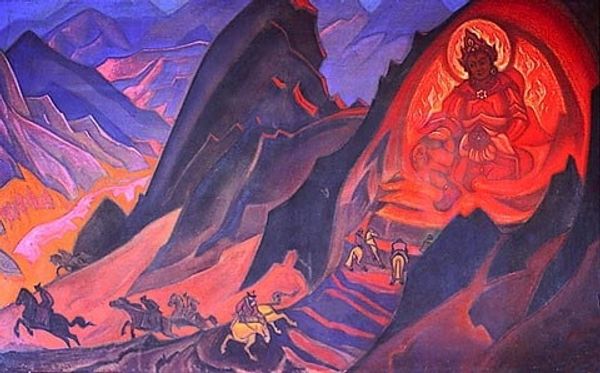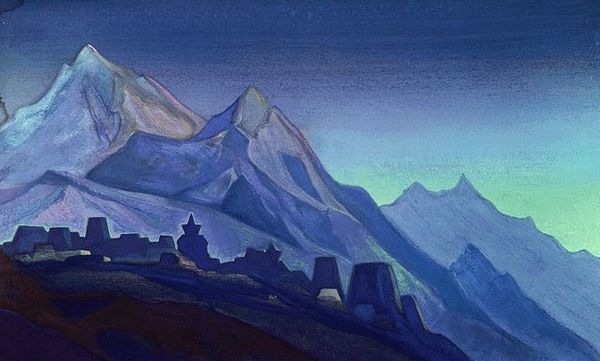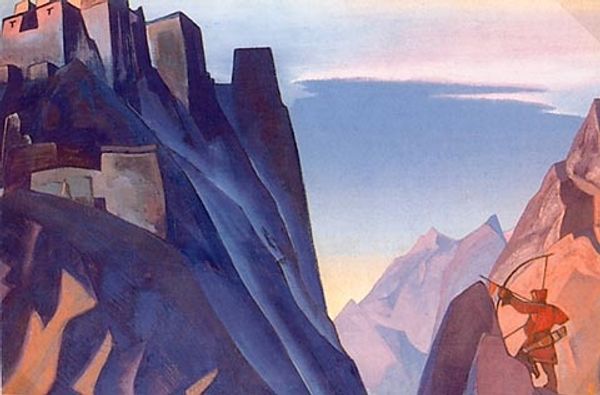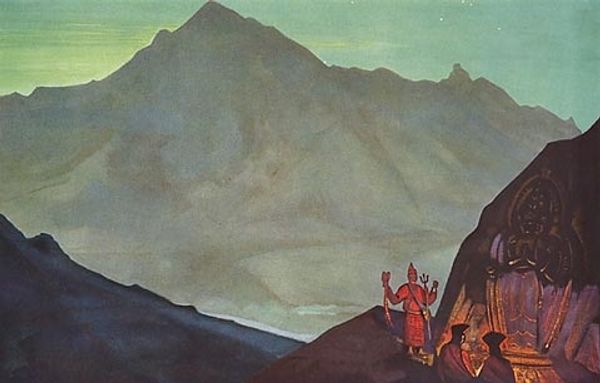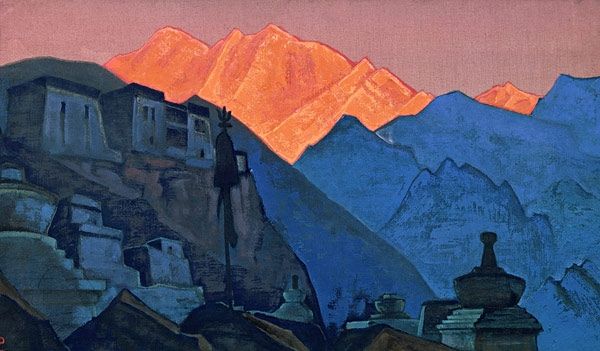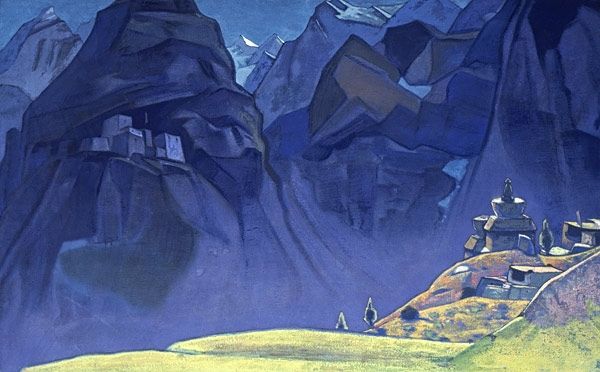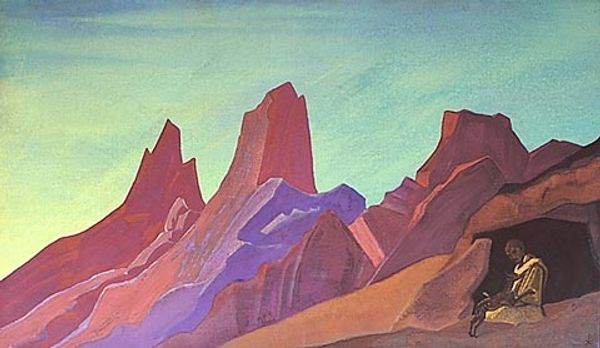
Cry of the serpent 1914
0:00
0:00
nicholasroerich
Pskov State United Museum of History, Architeture and Fine Arts, Pskov, Russia
oil-paint
#
allegories
#
sky
#
abstract painting
#
symbol
#
oil-paint
#
landscape
#
impressionist landscape
#
figuration
#
oil painting
#
rock
#
fluid art
#
neo expressionist
#
mountain
#
natural-landscape
#
symbolism
#
russian-avant-garde
#
nature
Copyright: Public domain
Curator: Nicholas Roerich's "Cry of the Serpent," painted in 1914, presents a landscape charged with symbolic meaning. It's currently housed in the Pskov State United Museum of History, Architecture, and Fine Arts in Russia. Editor: My first impression is one of stark contrasts. The harsh, angular peaks of the mountains clash dramatically with the warmer, almost lurid forms in the foreground. The scale seems immense, yet oppressive. Curator: The painting’s historical context is key. Roerich, deeply involved in Theosophy and spiritual quests, likely imbued this scene with complex, perhaps esoteric, ideas. Consider Russia's socio-political landscape at that time, ripe with unrest before the First World War. The serpent's cry, then, might be read as a premonition. Editor: Absolutely. Formally, the arrangement contributes significantly. The rhythm of the peaks echoes in the smaller rock formations. There's a play of verticals against the more rounded shapes below. The intense blue of the mountains contrasting the yellows of the sky above—it feels almost expressionistic, but Roerich’s hand is distinct. Curator: Indeed, the 'cry' itself is not just a sound; it represents a revolt against the constraints imposed by society or the spiritual corruption Roerich perceived. It might resonate with feminist readings—the earth itself screaming against patriarchal dominance, as articulated in some ecofeminist discourses. Editor: An interesting interpretation. From a more structural perspective, the serpent—or rather, the implied serpent—is the signifier around which everything else pivots. Its absence emphasizes its implied power, like a semiotic void filled with potential energy. The mountains almost act as its cage. Curator: The work can also be seen as a representation of environmental degradation and colonialism’s impact on the land. The scream is the cry of nature itself as a political resistance act. This painting becomes a testament of resistance that extends into present discourses about ecological justice. Editor: Looking again at the materiality, the layering of the oil paint gives a strange texture, almost like cracked earth or ancient fresco. The use of line and the rendering of the geological forms create a tension between representation and abstraction. It resists easy categorization. Curator: It serves as a stark reminder that art doesn't exist in a vacuum; it's a reflection, critique, and often a call to action within the matrix of historical and sociopolitical powers that dictate the status quo. Editor: Indeed. The 'Cry of the Serpent' offers more than just visual intrigue; it compels us to consider the power of forms and the artist’s world to inspire, disturb, and demand attention.
Comments
No comments
Be the first to comment and join the conversation on the ultimate creative platform.
